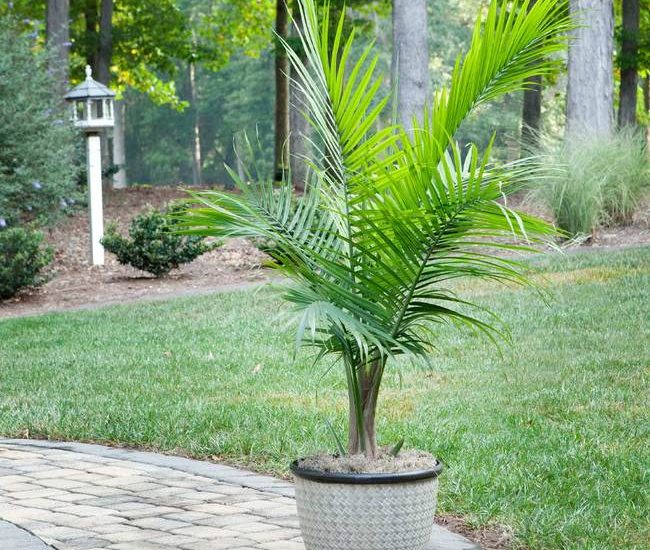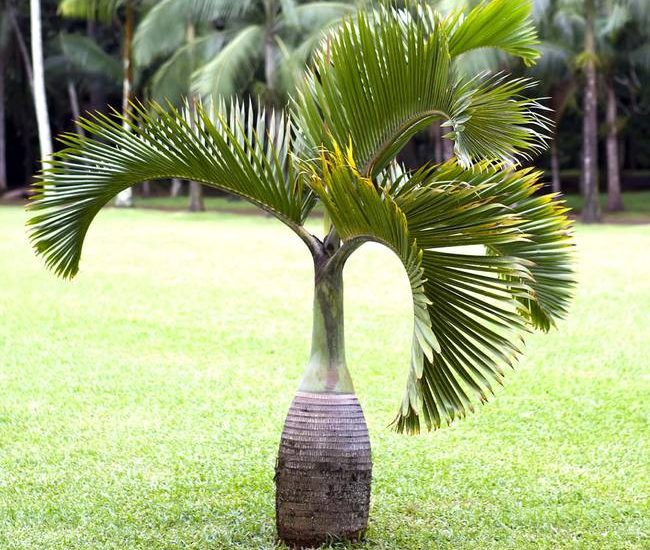Hawaii Fruit Trees Identification: A Guide to Identifying Common Fruit Trees in Hawaii
Hawaii’s tropical climate and unique ecosystem make it a hub for an array of fruit trees. From mangoes to papayas, Hawaii is home to a diverse range of fruit trees that thrive in the warm, humid climate. However, identifying these fruit trees can be a challenge for both locals and tourists alike.

In this article, we will explore the different types of fruit trees found in Hawaii and how to identify them. Whether you are a local looking to learn more about the fruit trees in your backyard or a tourist interested in the local flora, this article will provide you with the knowledge and tools to identify Hawaii’s fruit trees with confidence. So, let’s dive into the world of Hawaii’s fruit trees and discover the unique characteristics that make each one special.
Identifying Common Hawaiian Fruit Trees
Hawaii is known for its tropical climate and abundance of fruit trees. Identifying common Hawaiian fruit trees can be a fun and educational experience for both locals and tourists. Here are some tips on how to identify some of the most common fruit trees found in Hawaii.
Mango Trees
Mango trees are one of the most recognizable fruit trees in Hawaii. They can grow up to 100 feet tall and have a wide canopy of leaves. Mango trees produce large, oval-shaped fruits that range in color from green to yellow to red. The flesh of the fruit is sweet and juicy, and it has a distinctive aroma. Mango trees are often found in backyards, parks, and along roadsides throughout Hawaii.
Citrus Trees
Citrus trees are also common in Hawaii. They include oranges, lemons, limes, and grapefruits. These trees have glossy green leaves and produce fragrant flowers. The fruits are round or oval-shaped and come in a variety of colors, including orange, yellow, and green. Citrus trees are often found in gardens and orchards throughout Hawaii.
Exotic Varieties: Jackfruit and Lychee
Jackfruit and lychee are two exotic fruit trees that are also found in Hawaii. Jackfruit trees can grow up to 80 feet tall and produce large, spiky fruits that can weigh up to 80 pounds. The flesh of the fruit is sweet and has a tropical flavor. Lychee trees are smaller and produce small, round fruits that are covered in a rough, red shell. The flesh of the fruit is translucent and has a sweet, floral flavor. Both of these trees are often found in gardens and parks throughout Hawaii.
Identifying these common Hawaiian fruit trees can be a great way to learn more about the local flora and fauna. Whether you’re a local or a tourist, take some time to explore the natural beauty of Hawaii and discover the delicious fruits that grow there.
Cultivation and Care Essentials

Soil and Watering Requirements
Hawaii fruit trees thrive in well-draining soil that is rich in organic matter. It is important to avoid soil that is too compact or retains too much water as this can lead to root rot. Regular watering is essential, especially during the dry season. However, overwatering should be avoided as it can also cause root rot. A good way to ensure proper moisture levels is to mulch around the base of the tree to retain moisture and regulate soil temperature.
Sunlight and Pruning Practices
Most Hawaii fruit trees require full sun exposure to thrive. It is important to ensure that the trees are planted in an area that receives at least 6 hours of sunlight per day. Pruning is also an important aspect of tree care. Regular pruning helps to promote healthy growth and increase fruit production. Pruning should be done during the dormant season to avoid damage to the tree.
Pest and Disease Management
Hawaii fruit trees are susceptible to a variety of pests and diseases. It is important to regularly inspect the trees for any signs of infestation or disease. Common pests include fruit flies, aphids, and mealybugs. These can be controlled through the use of insecticidal soap or other natural remedies. Diseases such as powdery mildew and black spot can also affect fruit trees. These can be prevented through proper pruning and the use of fungicides when necessary.
Overall, proper cultivation and care of Hawaii fruit trees is essential for healthy growth and fruit production. By following these essential practices, growers can ensure that their trees remain healthy and productive for years to come.
Fruit Trees for Hawaiian Landscapes
Hawaii’s tropical climate is ideal for growing a wide variety of fruit trees that can add color and flavor to any landscape. From ornamental and shade trees to fruit production and harvesting, there are plenty of options for gardeners looking to incorporate fruit trees into their gardens.
Ornamental and Shade Trees
Fruit trees can add beauty and shade to any landscape. Some popular ornamental fruit trees in Hawaii include the Rainbow Shower Tree, which produces vibrant pink and yellow flowers, and the Plumeria, which produces fragrant and colorful flowers. Other fruit trees, such as the Mango and Avocado, are known for their large size and can provide ample shade for outdoor spaces.
Fruit Production and Harvesting
For those looking to grow fruit trees for their edible fruit, there are many tropical fruit trees that thrive in Hawaii’s warm climate. Some popular fruit trees include the Papaya, which produces sweet and juicy fruit, and the Pineapple, which is a symbol of Hawaii and is known for its sweet and tangy flavor. Other popular fruit trees include the Banana, which produces sweet and creamy fruit, and the Lychee, which produces small, sweet and juicy fruit.
When it comes to harvesting fruit, it’s important to know when the fruit is ripe and ready to be picked. For example, Papayas are ready to be picked when they turn yellow, while Pineapples are ready when their skin turns golden brown. Some fruit trees, such as the Mango, require a bit more patience as they can take several months to ripen.
Overall, fruit trees can be a great addition to any Hawaiian landscape, adding beauty, shade, and delicious fruit. Whether you’re a seasoned gardener or just starting out, there are plenty of options for growing fruit trees in Hawaii.


